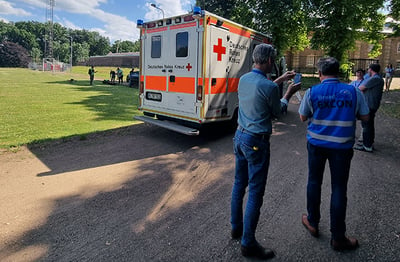These days, mobile broadband seems to be used by everyone everywhere, such is its phenomenal growth in the last few years. But if you think the technology has reached its limit in how it can be used, think again because the future will bring a myriad of new uses in all aspects of life. Not least of which is its use for mission critical applications, supported by ongoing progress in standardization.
Yet, how do public safety organisations and PMR operators make the most of the new opportunities? What is the best strategy for their critical communications investments?
Here's an outline for a critical communications investment strategy that can help you use your resources to the best advantage.
Five questions to help you devise an investment strategy
1. What is the purpose of your organisation?
2. What are your goals for the future?
3. What are your strengths, weaknesses, opportunities and threats?
4. What resources and options do you have?
5. How will you use these resources and options to achieve your goals?
Questions 3 and 5 are bound up with what TETRA and mobile broadband can offer and how they will change how your organisation thinks and behaves. Let’s take a closer look at some of these issues.

User value – the key driver for investment strategy
Investments in digital public safety networks based on TETRA technology have been driven by the need to provide additional value for users, such as more efficient and more effective public safety operations accompanied by huge leaps in security and safety. These benefits are a key strength of TETRA networks and growing use of mobile broadband can only improve them.

For first responders in the field, the value of TETRA is easy to pin down. When asking a police officer, what is the most important tool they carry, the answer is clear - a TETRA radio.
Why you should not forget service continuity
One of the risks of introducing new systems is the possible adverse effects they could have on existing communications services and operational procedures. You will not want to jeopardise service levels. Police officers, for example, must be able to trust their radios.
Continuity of existing services is therefore essential when introducing new applications, services and devices. Public safety organisations typically have highly stable operational procedures, with changes involving meticulous planning and lengthy implementation. Any new service or application needs to support existing ways of working.
In practical terms, the new solutions need to be integrated with the management of organisations, users, groups and security. And don’t forget integration with control rooms and field command solutions.
How to get the most value from mobile broadband
Mobile broadband is one of your new opportunities. To get the best user value from mobile broadband, first look at the applications. Your investment strategy should include making them mobile while also introducing new apps.

Mobile apps offer innovative ways to protect citizens, while also helping organisations work better.
For example, first responders to an accident could send video and photographs from the scene – with better, more immediate information, commanders at the control centre can make better decisions. Using reporting tools supported over broadband, police officers could spend more time in the field with people and less at the police station. New applications can also simplify and automate existing procedures.
How to build your critical communications investment strategy
Today, TETRA users think of their radios as a most valuable tool in their daily work. They must have confidence that the TETRA communications services will also support their duties in the future and with a good level of service. Users also want new services, applications and devices that can meet their everyday needs. They also don’t want their work to be disrupted, so maintaining service continuity should be part of your investment strategy.
A good way to evolve towards mobile broadband is to continue with the existing TETRA network and complement it with broadband. In other words, to build a hybrid network. This will let you use mobile broadband to deploy new apps for greater operational effectiveness.
Although voice over broadband may be available, it is not mission critical. Therefore, it is not a realistic option for operational use in public safety. In other words, your investment strategy must include the modernisation of your TETRA network. Without this, it will be very hard to ensure that the network continues to meet the needs of public safety users for years to come.
Overall, it’s important to ensure that the TETRA and broadband networks are properly integrated and can be provisioned and managed by a single system. It is also important that existing operational procedures are supported while maintaining the highest levels of security. That is why you should look for a solution that achieves all these aims.
Read more on investment strategies in our new white paper: "How to get more from your TETRA network and build your future, too".
And when you are planning to introduce mobile broadband and mobile apps but don't know where to start, take a look at these 14 great resources that help you evolve your PMR network to broadband, provided by Key Touch magazine.





